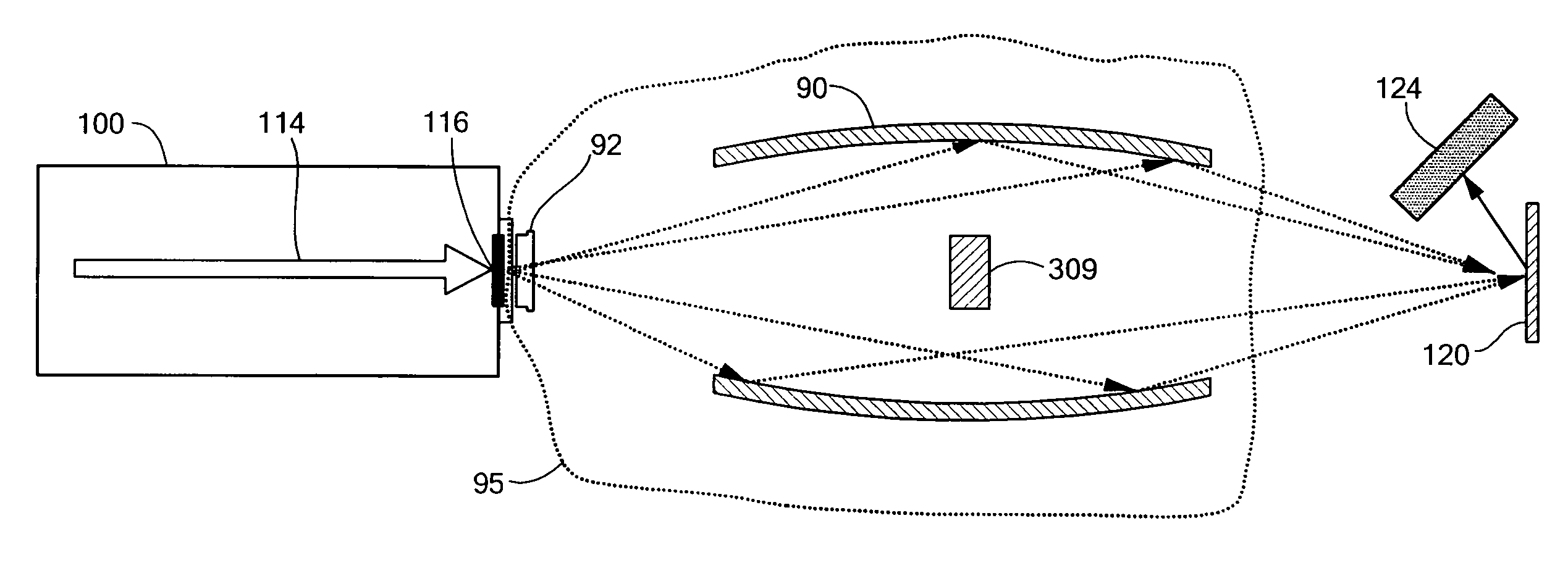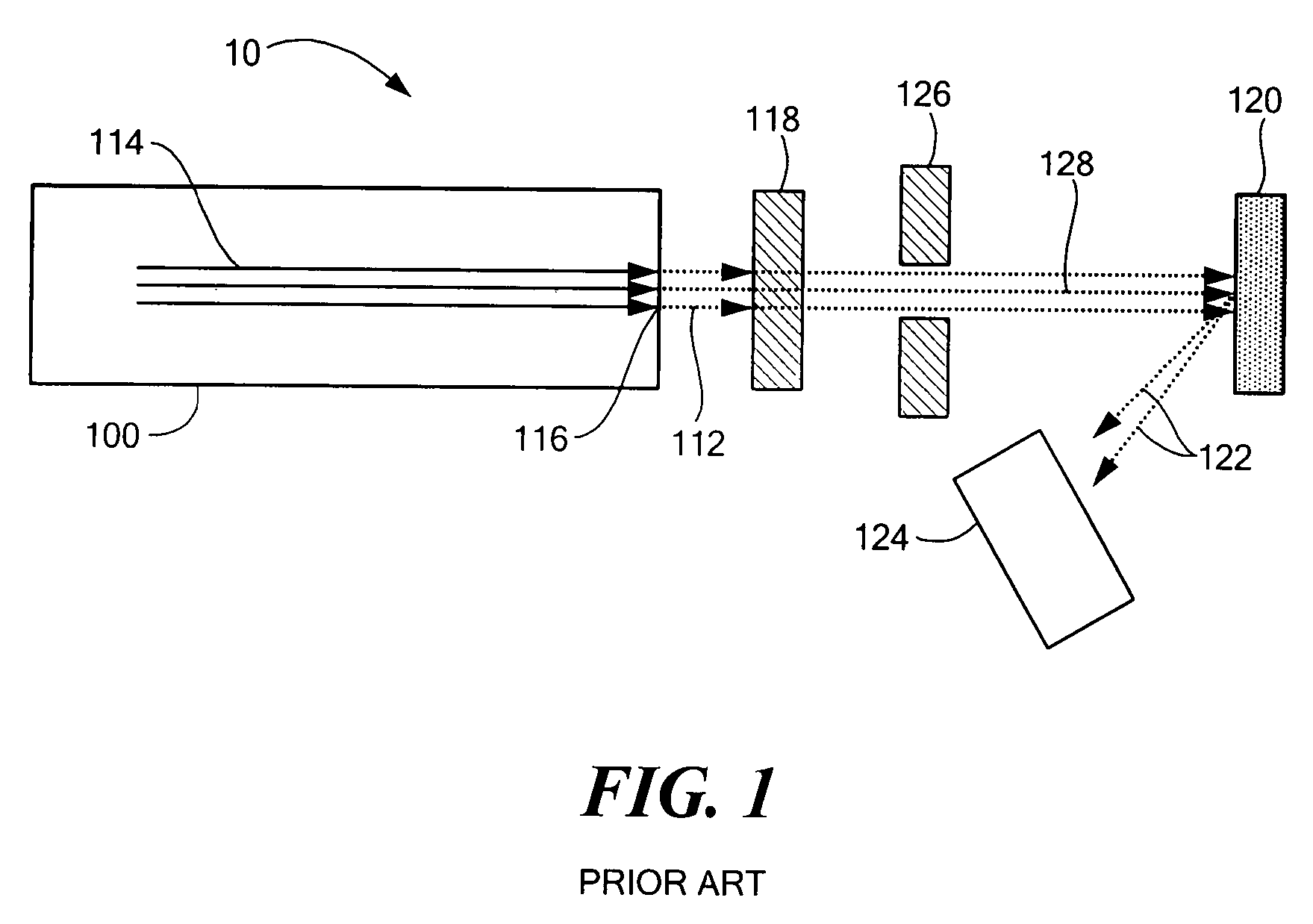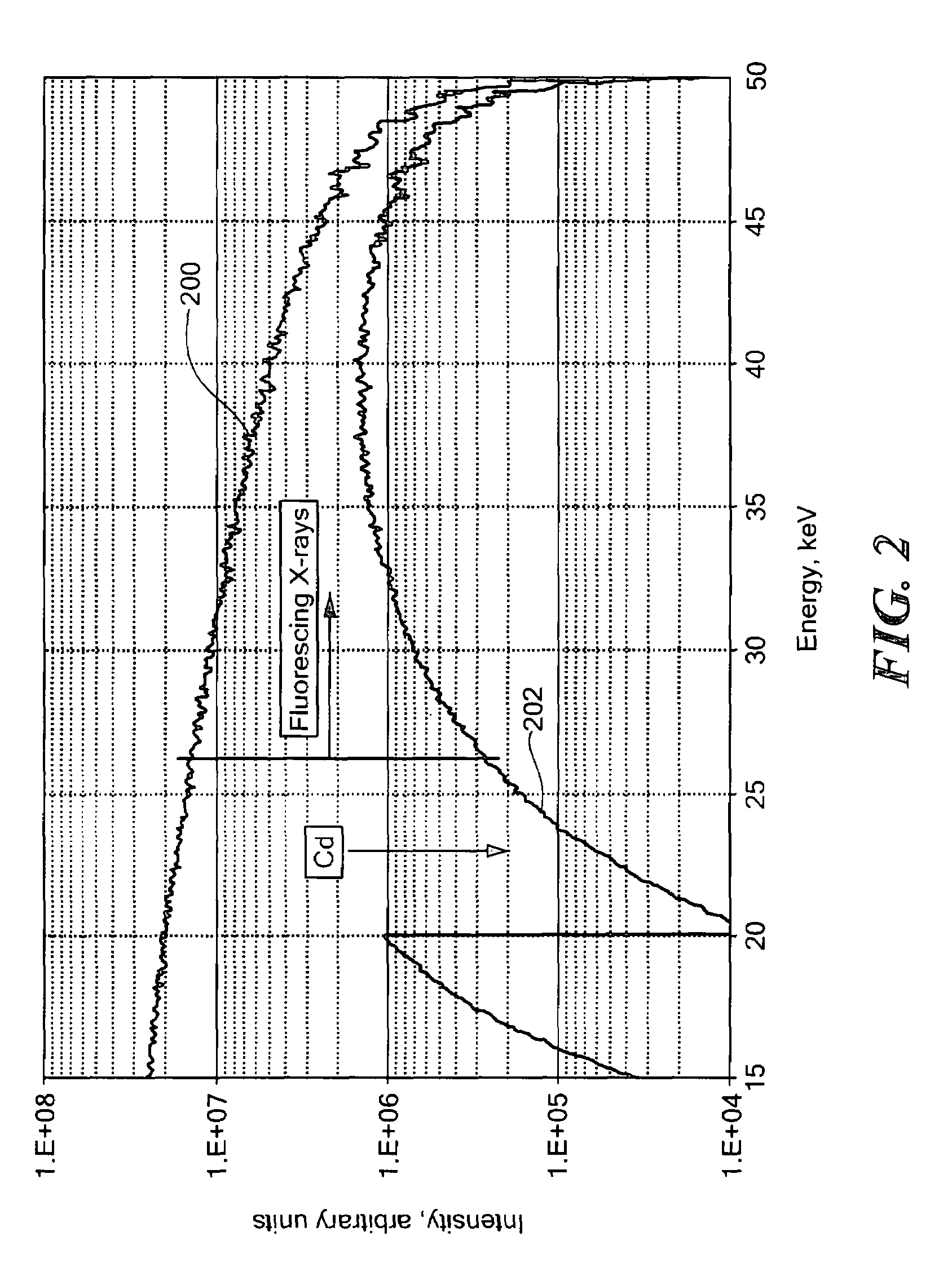Two-stage x-ray concentrator
a concentrator and x-ray technology, applied in the direction of x-ray tube targets, convertors, instruments, etc., can solve the problems of incompatibility with hand-held or portable spectrometers, size, weight and power requirements of these devices,
- Summary
- Abstract
- Description
- Claims
- Application Information
AI Technical Summary
Benefits of technology
Problems solved by technology
Method used
Image
Examples
Embodiment Construction
[0031]In prior art x-ray focusing systems such as that depicted in FIG. 3 and described in the foregoing Background Section, which may be referred to herein as based on single-stage concentrators, the anode 305 of x-ray tube 100 is the object of the x-ray optical lens formed by focusing element 303.
[0032]In accordance with preferred embodiments of the present invention, now described with reference to FIG. 4, a converter 400 is interposed, directly adjacent to anode 305 of x-ray tube 100 so as to convert the emitted x-rays 402, referred to herein as “first-stage” x-rays, into x-rays 404 characterized by a nearly monochromatic x-ray spectrum, referred to herein as the “second stage x-ray spectrum.” Converter 400 is now the new object of the x-ray optical lens. The method depicted may be referred to herein as a “Two-Stage Concentrator” (TSC). The optimal composition, size and thickness of the converter are selected, based upon principles to be described, in accordance with parameters ...
PUM
| Property | Measurement | Unit |
|---|---|---|
| distances | aaaaa | aaaaa |
| length | aaaaa | aaaaa |
| energy | aaaaa | aaaaa |
Abstract
Description
Claims
Application Information
 Login to View More
Login to View More - R&D
- Intellectual Property
- Life Sciences
- Materials
- Tech Scout
- Unparalleled Data Quality
- Higher Quality Content
- 60% Fewer Hallucinations
Browse by: Latest US Patents, China's latest patents, Technical Efficacy Thesaurus, Application Domain, Technology Topic, Popular Technical Reports.
© 2025 PatSnap. All rights reserved.Legal|Privacy policy|Modern Slavery Act Transparency Statement|Sitemap|About US| Contact US: help@patsnap.com



